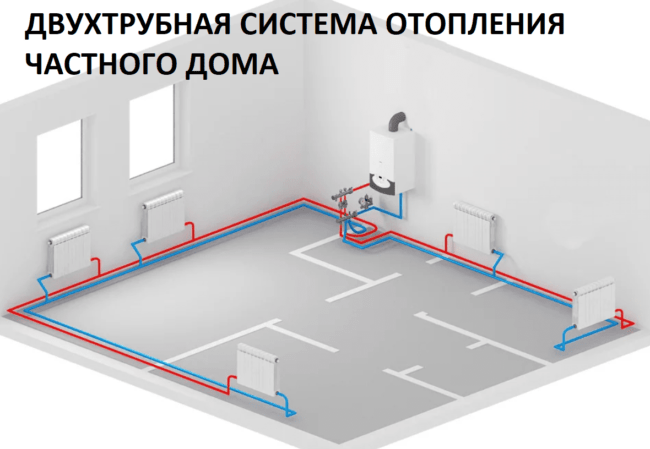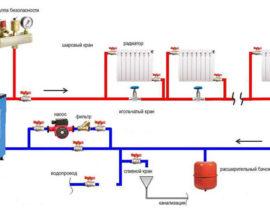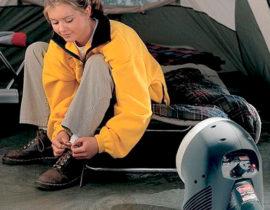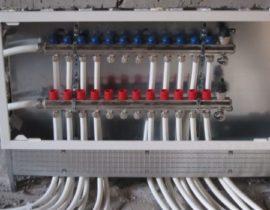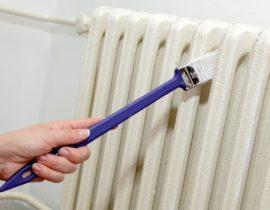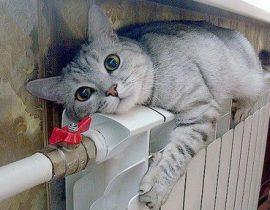The heating system is the most important component of the cosiness and comfort of the living space, providing warmth even in severe cold. But in order for this system to be reliable and not fail at the most inopportune moment, each homeowner must make the right choice, preferring the most rational, acceptable heating option on the market.
Today we will talk about the most popular version of a two-pipe heating system and reveal all its nuances and features, pros and cons, scope and principle of operation. So, to business!
Content
- Categories of heating systems and the principle of operation
- Pros and cons of a 2-pipe system
- Varieties of 2-pipe system schemes
- Possible problems and solutions
- Modern control for single pipe systems
- Modern control for two-pipe systems
- steam traps
- Question answer
- Video tips for installing a two-pipe heating system
Categories of heating systems and the principle of operation
Heating the room was invented by mankind 3000 years ago. Back in that distant era, ancient people used a system of pipes leading to hot water boilers to heat the palaces of influential people during the cold period.Today, the heating system is a mandatory attribute of modernity, representing a wide range of options.
There are two main categories of pipe heating systems: one-pipe and two-pipe.
The difference between the systems is as follows: 1-pipe system operates on the principle of a closed ring. Circulating, the water passes through the boiler and heats the radiators, after which the cold water returns. The 2-pipe heating principle consists in the operation of two circuits that distribute heat.
The type of system being installed will affect the dimensions of the radiators and piping. It is also worth noting that the first option is more often used in houses of small footage, while the second is used for a large area, for example, for heating cottages.
Pros and cons of a 2-pipe system
The advantages of such heating include the following points:
- The system is more reliable and less vulnerable to defrosting;
- Parallel connection principle, providing greater heat output;
- The possibility of extension, both in the vertical and horizontal directions, which is especially convenient when expanding the living space (extension of living quarters);
- Possibility of manual temperature control for each room.
The cons include the following:
- higher cost;
- Installation is somewhat more complicated;
- More consumables (pipes) will be required.
Varieties of 2-pipe system schemes
There are several variations of 2-pipe heating, each of which has its own nuances that should be considered when choosing.
Two-pipe system with direct return
In a two-pipe direct return system, the total length of pipe from the pump to each radiator is shorter for radiators closer to the pump and longer for more distant radiators. For this reason, the pressure drop can be significantly higher on the nearest radiator than on the furthest one.
This must be taken into account when designing the system. The advantage of a direct return system is that pipe routing is simpler compared to a reverse return system.
Two-pipe system with reverse return (Tichelmann system)
In a two-pipe return return system, the total length of pipe from the pump to each radiator is the same for all radiators on the same floor. This gives a favorable distribution of water.
Two-pipe system with top piping
The distribution pipe is located in the false ceiling and the ventilation holes are installed in the central positions. This type of system is common in large buildings as it is relatively easy to balance and adjust. It is also easy to expand the system.
Two-pipe system with floor piping
This system is very common in homes and buildings where piping cannot be installed in the available ceiling space. Distribution pipes are located under the floor. In multi-storey buildings, ventilation screws are required on radiators. Circulating, inline single stage pumps are commonly used for two pipe heating systems in domestic and commercial heating systems.
Possible problems and solutions
Many buildings in large cities have existing one- and two-pipe steam heating systems.
Both 1-pipe and 2-pipe systems have control problems from time to time, resulting in uneven heating, high fuel consumption and water hammer.
Let's now look at modern systems, best practices, and troubleshooting to maintain a comfortable environment and save energy.
Heating systems allow condensate and steam to move throughout the system within the same pipes.
As the boiler creates steam, it travels through the pipes and up to the radiators where it heats up the space and condenses. This condensate is then returned through the same pipe(s) back to the boiler.
The pipes and radiators are all sloped back towards the boiler to allow this system to work under gravity.
For the system to work well, the steam flow must be balanced. Adjustable air valves must be installed on each of the radiators. Thus, radiators closest to the boiler may have a smaller opening on the air valve.
Radiators further away from the boiler may have a larger opening. This allows the steam to flow more evenly throughout the system, as the radiators closest to the boiler do not overheat and the radiators farthest away from the boiler do not heat up.
Air valves operate using a bellows filled with an alcohol-water mixture. The temperature is such that air can escape, but when steam is present at high temperature, it turns into a gas, expanding the bellows which closes the valve. Air valves should be checked every three to five years as they can fail and are essential for the system to function properly.
Automatically controlled air valves
They can be set for different temperatures from room to room. Although they cost more than simple air valves, they actually respond to the slightest change in temperature, not just the amount of steam in the radiator. The control is noticeably better and it is a higher quality product than simple air valves.
Modern control for single pipe systems
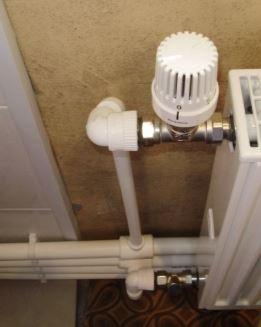 The boiler is usually controlled by a single thermostat, which provides poor control, especially in townhouses. The thermostat will only take into account the temperature of the floor or the room in which it is located.
The boiler is usually controlled by a single thermostat, which provides poor control, especially in townhouses. The thermostat will only take into account the temperature of the floor or the room in which it is located.
For example, if the thermostat is located on the first floor next to the boiler, then it will read the temperature of that floor.
The steam will reach the radiators first, quickly heating the floor. This means that the thermostat will turn off the boiler before the steam can fully heat the radiators on the floors furthest from the boiler, resulting in lower temperatures on those floors.
To eliminate this problem, it is proposed to place temperature sensors on several floors with an averaging thermostat.
This ensures a more even distribution of heat.
Larger single pipe steam heating systems may require the use of a thermal timer control.
Modern control for two-pipe systems
The two piped steam systems have steam supply lines and separate condensate return lines. If the system is operating correctly, there will be only a small amount of condensate in the steam lines. The key to uniform and comfortable heating is again a balanced flow of steam to the radiators and return of condensate to the boiler.
Return lines are arranged as single pipe systems, so that the condensate can work under the force of gravity. The supply lines also have a slope leading to the return line. There are some systems that have condensate pumps or vacuum pumps that facilitate the movement of steam and condensate, however most systems will have pitched pipes.
steam traps
To control the flow of steam and condensate, these two liquids must be separated. The usual method is to install a steam trap downstream of each radiator. This device allows air and water to exist in the radiator, but not vapor. If the traps are not working, the system cannot be controlled.
The internal element of a failed trap can be easily replaced by a plumber. Of course, if your traps didn't work, then it's reasonable to assume that all traps in the building should be tested.
If the system is old, it would be wise to replace all thermostatic radiator traps.
Now that the steam and water are separated, we can move on to controlling the radiators. A thermostatic radiator valve (TRV) is used to control the temperature in two-pipe steam systems. The expansion valves monitor the temperature near the radiator and are attached to the steam supply pipe.
You can then manually set the temperature: the settings are usually displayed numerically with a temperature range corresponding to each element of the system. When the desired temperature is reached, the valve will close the steam supply to the separate radiator. If the heatsink is installed in an enclosure, then the capillary tube model must be used.
Question answer
The 1-pipe system operates using a complete ring of piping with flow and return from the boiler. The disadvantages of this system tend to outweigh the advantages, so they are used less and less.
The 2-pipe system has become popular since the 1970s, and is still the most common method of feeding radiator circuits. Water circulates here, both along the circuit and through the radiators, which, in turn, increases the heating rate of the radiators.
It is more practical and affordable for autonomous heating of housing.
In everyday life, you can find various heating schemes, however, we note that several factors influence the choice. Preference is given to one or another scheme based on the availability of funds from homeowners, the expected effect and design features of the residential building. The 2-pipe version is more often used in practice due to its high efficiency, reliability and ease of adjustment.
The principle of operation is quite simple: the coolant circulates from the boiler to the radiators along two circuits. The first pipe directly supplies heat from the boiler to the radiators, while the second is designed to transport the cooled coolant back.
Of course, this option has some technical difficulties associated with installation, but reliability, ergonomics and efficiency make the 2-pipe heating principle the most popular for decades. But still, when choosing a system, pay attention to the features of the living space, its footage, as well as your own selection criteria and financial capabilities.
Video tips for installing a two-pipe heating system


